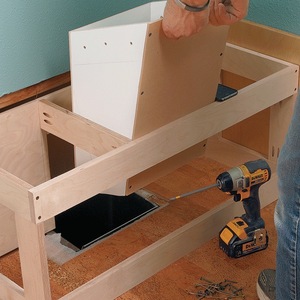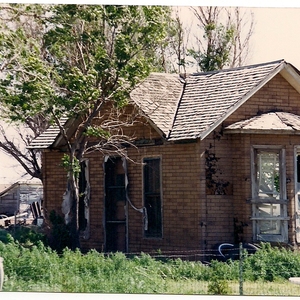Ventilate behind furr walls in basement?
Is there a way to ventilate behind furr walls in a daylight basement? Code says we must provide firestops every 10′ vertically and horizontally and foam and caulk. This traps air behind the 10′ by 10′ sections? Is there anyway to ventilate these areas?
Thanks,
Brian


















Replies
Where are you? What do you hope to accomplish by venting behind the walls? In humid areas, introducing air into this space would likely do nothing except load it with moisture. Air movement if framing cavities is rarely, if ever, your friend.
Andy
"Never try to teach a pig to sing. It wastes your time and annoys the pig." Robert A. Heinlein
"Get off your dead #### and on your dying feet." Mom
Most concrete basement walls are saturated with ground water. Air movement can keep the surface too dry to grow mushrooms.SamT
That depends on the source of the moisture, the temperature of the concrete, and the relative humidity of the air. If the wall is saturated with groundwater, that's a problem ventilation is unlikely to cure. For a surface to dry, it has to be warm enough to generate sufficient molecular motion so that water molecules literally jump off. The surrounding air must be dry enough to accomodate these water molecules, and be moving enough to transport the water away. That's a tough slog with a basement wall.
The other thing working against you is hydrogen bonding. Because of the molucular structure of water, there's a fairly strong attraction between the molecules. This attraction is evidenced by surface tension. While all molecules above 0 K in temperature are always in motion, water molecules have a tough time developing the speed to break past the surface tension. Absent an input of heat to drive molecules off, generally an equilibrium develops near the surface with a similar number of molecules leaving and being captured.
So, what often happens when you ventilate basements is the reverse of the desired end. Air with a high relative humidity contacts cool concrete. The water molecules in the air happily drops to a lower energy level by condensing on the concrete. This water now won't dry easily without an input of heat to cause a phase change, or a great deal of time and dry air to capture the random escape of water molecules from the water's hydrogen bonding.
In short, outside of desert climates, air striking a foundation wall is far more likely to wet it than to dry it. To dry a basement wall, you have to take steps to prevent it getting wet from the outside - grading and drainage, plus waterproofing if that's an option. You have to prevent moisture laden air from contacting the concrete, and you may have to mechanically dehumidify. Andy
"Never try to teach a pig to sing. It wastes your time and annoys the pig." Robert A. Heinlein
"Get off your dead #### and on your dying feet." Mom
Concrete basement walls are usually saturated with moisture.SamT
Which air alone won't remove. And often, that water comes not from the ground, but from the air.Andy
"Never try to teach a pig to sing. It wastes your time and annoys the pig." Robert A. Heinlein
"Get off your dead #### and on your dying feet." Mom
Without interfering with the MC of concrete basement walls, could it be that OP is trying to cipher out a code requirement for firestopping v. ventilation on the "daylight" portion of the baement walls?
I want to remember "furred" walls were refered to--but who firestops those? (Kinda difficult with an airspace behind, n'est ce pas?) I was nodding along, enjoying the witty banter, imagining the hinged-out walls to get to the Morells within when "10' x 10' sections" and "firestopping" colided in the Escher-designed railyard in my head . . . Occupational hazard of my occupation not being around (sorry Bubba)
Could be, but firestopping is only required at 8 feet or so.
Andy
"Never try to teach a pig to sing. It wastes your time and annoys the pig." Robert A. Heinlein
"Get off your dead #### and on your dying feet." Mom
"Concrete basement walls are usually saturated with moisture."From what source?
Soil moisture.
Concrete is a capillary sponge. If it's in contact with moisture it will absorb it until equilibrium is established.
Dry" concrete, ie; ready for glue down flooring, may have 80% relative humidity.
Saturated concrete may contain <1-55% (less than one up to fiftyfive percent) water by weight. IIRC.
1% would be for very dense 'crete and the 55% only applies to insulcrete, "normal," slightly porus, not so great concrete crete would run about 8% water by weight at the most.
Insulcrete has positve bouyancy when dry and can double it's weight when saturated (|:>)
Basically, a dry piece of concrete is only as dry as a water balloon.SamT
Great info ... Thanks
Have you got Bill Rose's Moisture in Buildings? You'd like it.Andy
"Never try to teach a pig to sing. It wastes your time and annoys the pig." Robert A. Heinlein
"Get off your dead #### and on your dying feet." Mom
>>Most concrete basement walls are saturated with ground water. Air movement can keep the surface too dry to grow mushrooms
In that situiation, they shouldn't be finished, IMO